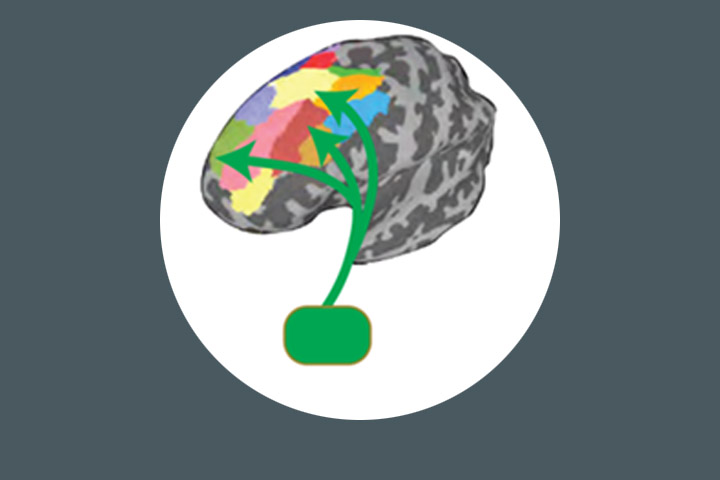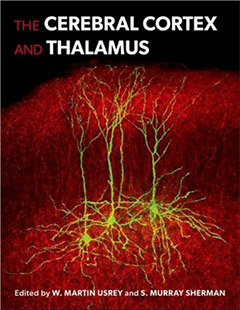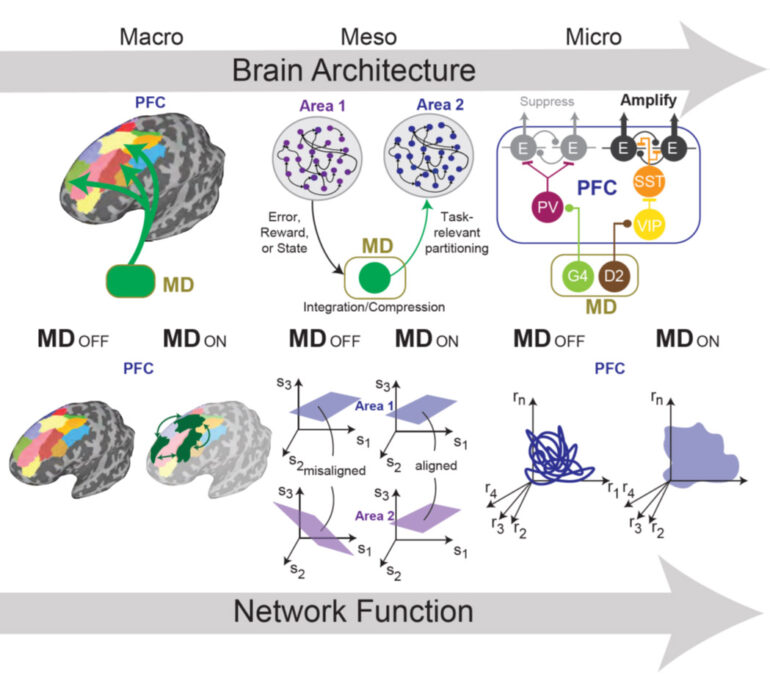
The mediodorsal thalamus in executive control
In recent years, there has been a surge in research focused on thalamocortical circuits, leading to a transformative shift in the conceptualization of thalamic functions. Outdated perspectives portraying passive relay functions are giving way to a more nuanced understanding, unveiling the intricate and integrative roles played by thalamic nuclei. These nuclei are now recognized as crucial for higher-order cognition and the coordination of brain-wide mechanisms.
This review paper, authored by Mathieu Wolff and Michael Halassa, provides a comprehensive overview of this paradigm shift. It delves into the latest research trends concerning the mediodorsal thalamus (MD), a focal point where both researchers have made significant contributions. The paper highlights how this specific thalamic region plays a crucial role in regulating various aspects of prefrontal functioning, thereby supporting executive functions.
Potential computational roles for the MD across scales
(Top, left) The MD is broadly connected to a variety of PFC regions, which are themselves interconnected.
(Top, middle) Many of these regions send convergent inputs to the MD and receive divergent outputs from it. This property is hypothesized to facilitate efficient communication between areas based on intrinsic MD computations.
(Top, right) Several types of neurons are known to exist in the MD, including neurons targeting glutamatergic cortical cells (labeled E above), neurons that express kainite receptors (G4 above) targeting parvalbumin (PV)-positive cortical interneurons, and neurons expressing D2 receptors targeting vasoactive intestinal peptide (VIP)-positive cortical interneurons. The E-E connections (not shown) may transmit information, whereas the G4-PV connections suppress local activity and the D2-VIP connections amplify it.
(Bottom) The three structural features just noted may function to coordinate inter-regional network-level communication (left) by determining which local activity patterns are preferentially instantiated across network nodes (middle, axes are those of the neural activity state space. The extent (and nature) of this interregional functional connectivity should be closely related to prefrontal activity patterns within individual regions, which the MD constrains onto task-relevant subspaces (right, axes are those of individual neuronal spike rates, illustrating the reduced dimensionality of PFC activity when the MD is engaged.
Abstract
Executive control, the ability to organize thoughts and action plans in real time, is a defining feature of higher cognition. Classical theories have emphasized cortical contributions to this process, but recent studies have reinvigorated interest in the role of the thalamus. Although it is well established that local thalamic damage diminishes cognitive capacity, such observations have been difficult to inform functional models. Recent progress in experimental techniques is beginning to enrich our understanding of the anatomical, physiological, and computational substrates underlying thalamic engagement in executive control. In this review, we discuss this progress and particularly focus on the mediodorsal thalamus, which regulates the activity within and across frontal cortical areas. We end with a synthesis that highlights frontal thalamocortical interactions in cognitive computations and discusses its functional implications in normal and pathological conditions.
Reference
Wolff M, Halassa M (2024)
The mediodorsal thalamus in executive control. Neuron.
DOI: https://doi.org/10.1016/j.neuron.2024.01.002
Context
 Michael Halassa was an invited speaker at the Neurocompare Brain Conference. Mike and Mathieu also recently contributed chapters in the authoritative book from Martin Usrey and Murray Sherman” The Cerebral Cortex and Thalamus” (Oxford academic), published in November 2023). Mathieu is currently a visiting scholar at University of Canterbury, Christchurch, New Zealand.
Michael Halassa was an invited speaker at the Neurocompare Brain Conference. Mike and Mathieu also recently contributed chapters in the authoritative book from Martin Usrey and Murray Sherman” The Cerebral Cortex and Thalamus” (Oxford academic), published in November 2023). Mathieu is currently a visiting scholar at University of Canterbury, Christchurch, New Zealand.
https://academic.oup.com/book/55212/chapter-abstract/427111272?redirectedFrom=fulltext
https://academic.oup.com/book/55212/chapter-abstract/427111372?redirectedFrom=fulltext
Last update 28/03/24

